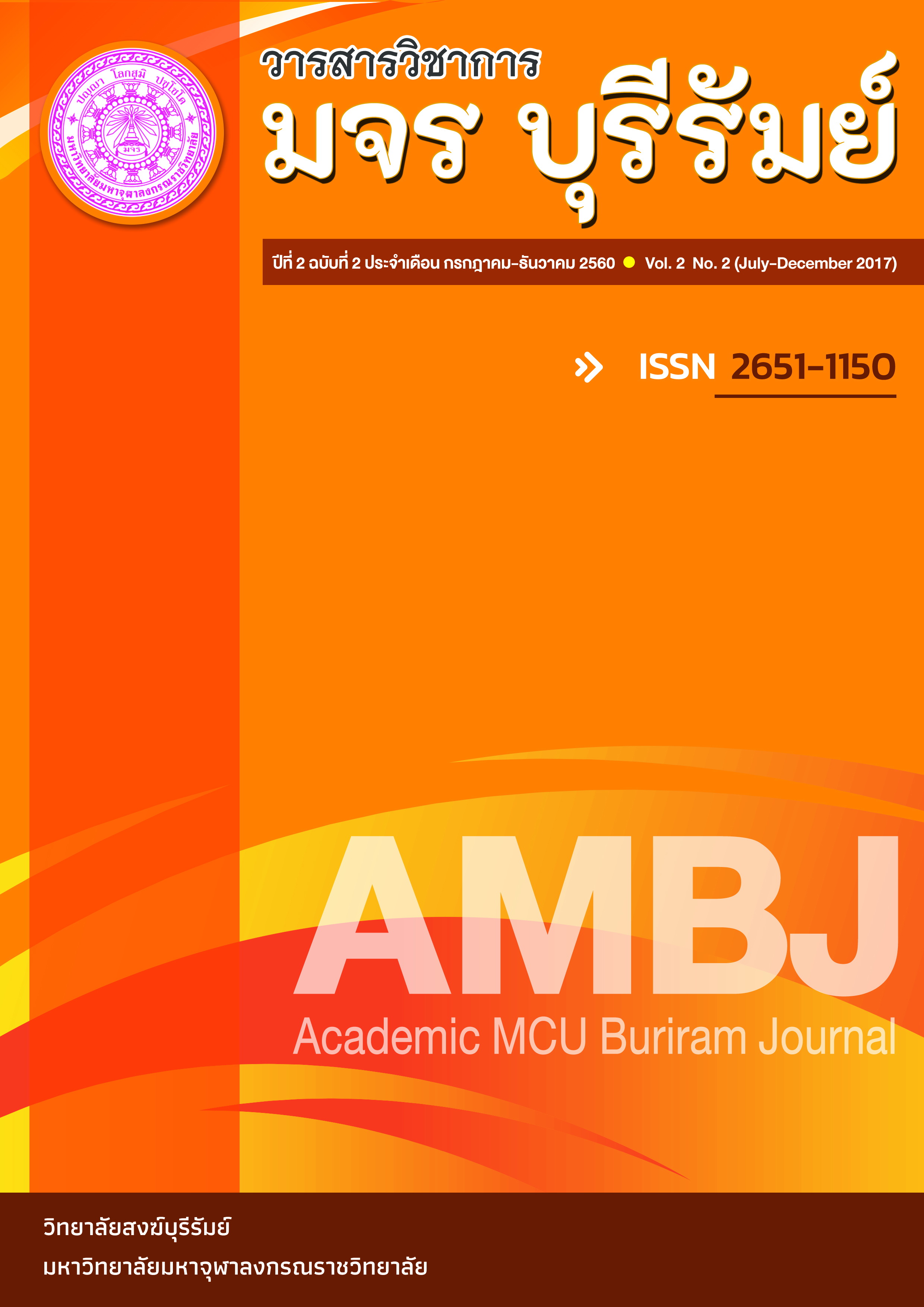Developing Cultural Tourism Village by Participation of Community: Case Study of Ban Kut Ngong Muang District, Chaiyaphum Province
Keywords:
Developing Cultural Tourism Village, Participation of CommunityAbstract
This research has the following objectives: 1) to study overall condition and analyze natural environment of Kut Ngong cultural village tourism 2) to study tourist satisfaction toward environmental management in development of the cultural village tourism 3) to explore practical approach in development of cultural village tourism with community participation. This research applied a mixed-method approach. The research population was the locals of Kut Ngong village, Muang district, Chaiyaphum province. On the part of quantitative approach, the samples used were 380 representatives of tourists who visited boundary stones at Kut Ngong village and were selected through accidental sampling technique. To gather quantitative data, tourist satisfaction was measured using questionnaire and the data were statistically analyzed with descriptive statistics including the percentage, the mean and the standard deviation. With regard to qualitative approach, the data were collected from in depth interview with key informants who were significant figures of the communities including community leaders, local intellectuals, advisory committees, committees of the villages, groups of villagers.
The findings could be summarized as follows:
- Revealed that Kut Ngong village possessed abundant natural resources and the name Kut Ngong was derived from its natural structure of tightly curving meander bends within the village. Based on empirical evidences of a number of boundary stones, it was hypothesized that this area was once occupined by Laos people. Kut Ngong village differed from other villages because it was surrounded by flowing stream of water; also it was located on plain land which was suitable for agriculture. In terms of history, a group of people from Ban Pue village, Kut Tum sub-district, Muang Chaiyaphum district immigrated into the area in 2442 B.E. and prosperously developed the land. The analysis on the village’s environmental condition indicated that the strengths of the village involved abundant natural resources, enduring culture, and the boundary stones of Tawaraeadee era which were vital to the community. On the other hand, the weaknesses of the village included unemployment of the locals after harvesting season, value on extravagant lifestyle, and non-participation in strong occupational group. The improving prospect for the community was to become a cultural village model for sustainable development; however, scarcity of budget and shortage of supporting agencies were the obstacles for the village’s development.
- The study on tourist satisfaction toward environmental management in development of Kut Ngong cultural village tourism revealed that tourist satisfaction on hospitality of the villagers was not only at high level ( = 4.38) but also received highest mean score. Other aspects of tourist satisfaction which were also at high level included welfare and safety ( = 4.06), tour guide and attractiveness of the community ( = 3.76) and infrastructure and supporting facilities ( = 3.68). However, tourist satisfaction on excursion ( = 3.55) and restaurant and souvenir shop ( = 3.39) were at medium level.
3. A practical approach toward development of cultural village tourism is to enhance the village’s readiness by allocating store area for local products, properly renovating building construction, organizing space for learning sources and tourist service center and increasing more land and water tourism routes as well as the locals’ potential and readiness to provide services to the tourists.
Downloads
Published
How to Cite
Issue
Section
License
ทัศนะและความคิดเห็นที่ปรากฏในบทความวารสารฉบับนี้ถือเป็นความรับผิดชอบของผู้เขียนบทความนั้น ไม่ถือเป็นทัศนะและความรับผิดชอบของบรรณาธิการ





